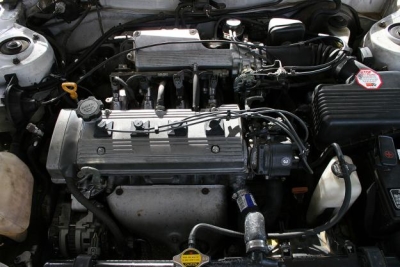
When I wrote an article entitled “How To Restart a Car That Has Run Out of Petrol”, my intention was to enlighten readers how to deal with one emergency that they might possibly face one fine day. It did not cross my mind, that there might be readers who might write in to ask a few questions regarding the above.
Infact one reader, a Mr. Kelvin, did contact me. First of all, he commended me for writing an informative article. Then followed up with a question: What if my car is a diesel, without a carburetor? Are the procedures the same?
To be frank with readers, I’m first of all, a driving school instructor, not a mechanic. Maybe, I may have more years of experience about cars than some of my readers. But I’m not shy to reiterate that I have very little notion of what fuel injection vehicles are all about.
Before proceeding any further, let me explain distinctly the difference between a conventional vehicle using plugs and a carburetor system, as a compared to a diesel engine vehicle which uses these days, electronic fuel injection, in a diesel engine, the absence of plugs and a carburetor is distinctly visible. In place of plugs, diesel engines are supplied with fuel injectors instead.
Now let’s come back to my reader, Kelvin’s query, can the procedures put forward by myself in the article on how one restarts a vehicle that has run out of petrol, be applied to vehicles using diesel? As petrol driven vehicles and diesel driven cars are dissimilar in many aspects, obviously the procedures recommended cannot therefore, be used.
To answer reader Kelvin’s question, I have to seek the assistance of my current personal mechanic, Ah Siang, 40. The above mechanic, was employed formerly by Messrs Tan Chong motors, who are the agents for Nissan vehicles in Malaysia. My conversations with the above mechanic, has given me a better comprehension of how electronically fuel injection systems function.
To state that my conversations with my mechanic alone, has enabled me to pen an article on fuel injection systems, would be telling you a lie. Without a doubt, further readings and researches into the subject, would have to be conducted as well, to enable me to write this article.
What then is E.F.I.?
It is actually electronic fuel injection system. EFI has a matter of fact, replaced the conventional carburetor system these days. Most modern cars of today, use it. In EFI engines, injectors spray fuel into the intake manifold of engines. Electronic fuel injection systems are said to be divided into 2 types. They are:
i. Throttle body injection or single body injection
ii. Multi point injection system.
In throttle body injections, fuel is sprayed into the air as it passes through the intake manifold. In multi point injections, there is a presence of an injection free cyclinder which sprays fuel directly into the intake valve port.
How does an electric fuel injection differ from that of a conventional carburetor system?
To understand the above, it is imperative that we look at the basics of an electronic fuel injection system. The various parts or components of an electronic fuel injection system are as follows:
1. The fuel tank.
As for conventional cars, an EFI vehicle also has a storage tank for petrol or diesel.
2. The fuel pump.
Some mechanics term it as AC pump or electronic fuel pump. This pump is to circulate petrol/diesel and provide pressure necessary for a car engine to function.
3. The fuel filter system.
This system ensures that the vehicle is supplied with clean fuel, which protects the injectors.
4. The fuel pipe.
Fuel pipe lines are intended to supply fuel to the vehicles engines via injectors.
5. Injectors to spray fuel into the intake valve ports.
6. Pressure regulator system.
This unit controls the pressures system in the vehicle.
7. The throttle body.
The throttle valve is intended to control air into the engine.
8. Air cleaner.
The air cleaner is to provide clean, measured air which the engine requires.
9. The Search Chamber or Planum Chamber
This unit is to damper the flow of air.
10. Electric control unit.
A computer, processes the data around the engine. It processes the starter and uses the results to operate the injectors.
Now that we know all the major parts and components of an electronic fuel injection system, what then do we recommend drivers do when faced with a vehicle that has broken down due to the lack of fuel, especially diesel?
The steps recommended for a diesel powered vehicle are more or less similar for petrol driven cars. They are:
i. Pour the fuel (diesel) in this case, into the fuel tank, with a funnel shaped cardboard or paper contraption.
ii. Like a petrol powered engine, the AC pump or electronic fuel pump will then function to circulate the fuel (diesel) into the vehicle’s system.
Unlike in ordinary or conventional vehicles, one therefore cannot pour fuel into the carburetor system of the vehicle. However, it is believed that the fuel pump will supply the injectors with fuel needed. This will then automatically restart the vehicle that has unfortunately run short of petrol or diesel.
Well, Mr. Kelvin, now you know what you have to do when your diesel powered vehicle should run low of fuel.

Wow! Thanks for the explanation. I really appreciate that.
Of course, I’ll never drive till I’m out of fuel as it’s an expensive offense here in Germany (hefty fine and points). Just curious.
Thanks again and keep up the great writing.